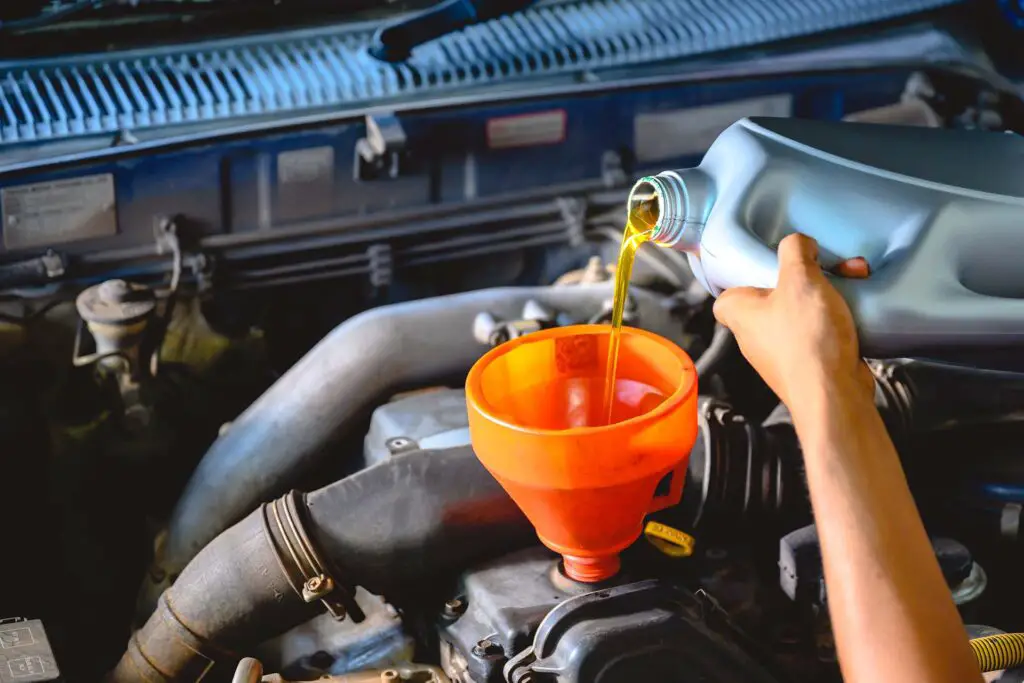Knowing when to change your vehicle’s oil – how many miles between oil changes – is key to its upkeep and smooth performance. We’ll cover the essentials of engine oil, including synthetic vs. conventional choices and DIY tips, to ensure you’re well-equipped to maintain your car effectively. Let’s find the perfect oil change intervals for optimal engine health.
How Many Miles Between Oil Changes?
Determining the optimal miles between oil changes is crucial for vehicle maintenance, influencing engine health and longevity. The interval varies with oil type and driving habits, but manufacturer recommendations provide a reliable baseline. Tailoring this advice to your specific driving conditions ensures your engine stays lubricated and efficient, enhancing your vehicle’s performance and reliability.

Explore the Real Significance of Oil Changes
Learning more about the significance of oil changes unveils more than just a routine vehicle maintenance task. It reveals a crucial practice that ensures the longevity and efficiency of your four-wheeler.
Regular oil changes are not merely about keeping up with a vehicle maintenance schedule but about understanding and preserving the heart of its engine. This being said, let’s explore the foundational role of engine oil and the repercussions of overlooking this vital aspect of car care, illuminating why timely oil replacements are indispensable for any vehicle owner.
What Is the Role of Engine Oil in Your Car?
Engine oil is the lifeblood of your ride, performing several critical functions beyond mere lubrication. It minimizes friction between moving parts, preventing wear and tear, and helps cool the engine by carrying heat away from vital components.
Additionally, engine oil acts as a cleaner, capturing dirt, debris, and combustion byproducts to prevent buildup that can degrade engine performance. Its role is fundamental not only in keeping the engine running smoothly but also in extending the vehicle’s lifespan by safeguarding it against premature wear and potential damage.
Consequences of Neglecting Oil Changes
Ignoring recommended engine oil replacement intervals can lead to a host of problems that go far beyond minor inconvenience. Delayed oil changes result in the accumulation of sludge and debris, which can clog the engine’s inner workings and reduce efficiency.
Over time, this neglect can cause increased wear on engine components, leading to reduced performance, higher fuel consumption, and even catastrophic engine failure. The cost of regular oil changes is a small price to pay compared to the expense and hassle of addressing these preventable issues.

Follow Mileage Guidelines for Oil Changes
Navigating through the maze of advice on when to change your vehicle’s oil can be confusing, with recommendations often varying widely. However, understanding the mileage guidelines for oil changes is critical for any vehicle owner aiming to maintain their car’s health and performance.
Traditional vs. Synthetic Oil
The choice between traditional and synthetic oil plays a significant role in determining how often you should change your vehicle’s oil. This being said, here’s a table with the comparison of synthetic vs. conventional oil and how they affect change intervals.
| Aspect | Traditional Oil | Synthetic Oil |
| Change Interval | 3,000 to 5,000 miles | 7,500 to 15,000 miles |
| Temperature Resistance | Lower | Higher |
| Engine Protection | Good | Excellent |
| Cost per Change | Lower | Higher |
Manufacturer Recommendations vs. Real-World Practice – What Is a Better Approach?
Vehicle manufacturers provide specific guidelines for oil change intervals, typically based on ideal operating conditions. However, everyday driving often involves a range of conditions that can significantly affect these intervals.
Factors such as frequent short trips, driving in extreme temperatures, towing, or extensive idling in heavy traffic can accelerate oil breakdown and contamination, necessitating more frequent changes. Consequently, while manufacturer recommendations are a good starting point, adjusting these intervals to reflect your actual driving habits can ensure your engine remains in peak condition, safeguarding its performance and longevity.

Be Aware of the Factors Influencing Oil Change Frequency
The frequency of oil changes is not a one-size-fits-all proposition. Several factors can influence how often you need to replace your vehicle’s engine oil, ensuring it continues to run efficiently and effectively.
Driving Conditions and Their Impact
The driving conditions under which you operate your vehicle significantly affect how often you should change its oil. Urban driving, characterized by frequent stops, starts, and short trips, can be tougher on engine oil than long-distance highway driving.
In urban settings, the engine doesn’t consistently reach optimal operating temperatures, leading to quicker oil degradation and potential moisture accumulation within the system. Conversely, highway driving allows the engine to maintain a steady, optimal temperature, resulting in less frequent oil changes.
Vehicle Age and Engine Type Play Important Role
The age of your vehicle and the type of engine it has also play crucial roles in determining oil change frequency. Older vehicles, which may not benefit from the advanced engineering and tighter tolerances of newer models, often require more frequent oil changes to compensate for their increased susceptibility to wear and tear.
Additionally, the engine type – whether it’s a high-performance engine, a diesel engine, or one designed for regular, unleaded gasoline – can necessitate different maintenance schedules. High-performance engines, for example, might demand more frequent oil changes due to the higher pressures and temperatures they operate under.
Diesel engines, on the other hand, may have different requirements due to the distinct properties and the additional contaminants it can introduce into the oil. Recognizing these nuances allows vehicle owners to better cater to their vehicle’s specific needs, ensuring a healthier engine and smoother performance.

DIY Step-by-Step Guide to Changing Your Oil
Performing an oil change yourself can be a rewarding experience, offering a sense of accomplishment and the potential for cost savings. However, it has its challenges and potential drawbacks. Let’s check out the DIY oil change tips, including a step-by-step guide and scenarios in which it might be better to rely on professional services.
Changing your oil is one of the most fundamental maintenance tasks you can perform on your vehicle. Here’s a brief guide to get you started, but always consult your vehicle’s owner’s manual for any specific requirements.
Gather Your Supplies
You’ll need the correct grade and amount of oil, a new oil filter, an oil pan to catch the old oil, a wrench to remove the drain plug, and an oil filter wrench.
Prepare Your Vehicle
Ensure the four-wheeler is on a flat surface, and ideally, use jack stands to elevate it for easier access.
Drain the Old Oil
Locate the oil drain plug under the car and place your oil pan beneath it. Carefully remove the plug and allow the oil to drain completely.
Replace the Oil Filter
Using the oil filter wrench, remove the old oil filter. Apply a bit of new oil to the gasket of the new filter, then install it by hand.
Add New Oil
Once the oil has drained and the filter is replaced, reinstall the drain plug. Then, fill the engine with the new oil using the correct amount specified for your vehicle.
Check for Leaks
Start the engine and let it run for a few minutes, checking for any signs of leakage from the oil drain plug or filter.
Dispose of Old Oil Properly
Take the old oil to a recycling center or a facility that accepts used oil.
When to Leave It to the Professionals
While many vehicle owners can perform an oil change at home, there are scenarios where professional service is recommended. Let’s check them out:
- Lack of proper tools – If you don’t have the right tools, it might be more cost-effective and safer to let a professional handle it.
- Vehicle complexity – Modern vehicles can have complex requirements or hard-to-reach oil filters and drain plugs, making a DIY oil change more difficult.
- Environmental concerns – Disposing of old oil improperly can harm the environment. Professional service centers have the means to dispose of it responsibly.
- Time and convenience – Sometimes, the time and effort required to change your oil yourself aren’t worth the savings, especially when professional services can perform the task quickly and efficiently.

Extend Your Engine’s Lifespan With Proper Maintenance
Maintaining your vehicle’s engine goes beyond regular oil changes. Comprehensive vehicle care encompasses a variety of maintenance tasks that together contribute significantly to extending the life of your engine and ensuring your vehicle remains reliable over the years.
Air Filter Replacement
Your vehicle’s air filter prevents dust, dirt, and other pollutants from entering the engine. A clogged air filter can reduce engine efficiency and performance. Replacing the air filter at recommended intervals helps ensure optimal airflow, improving fuel efficiency and engine performance.
Coolant Fluid Exchange
The coolant keeps your engine from overheating. Over time, it can become acidic and lose its ability to cool effectively, potentially leading to overheating and damage. Regularly checking and replacing coolant as needed is crucial for engine health.
Transmission Fluid Change
Transmission fluid lubricates the moving parts within the transmission. Like engine oil, it can degrade over time. Regularly changing the transmission fluid can prevent wear and tear on the transmission, ensuring smooth gear shifts and prolonging its life.
Spark Plug Replacement
Spark plugs ignite the fuel-air mixture in the engine, powering your vehicle. Worn spark plugs can cause misfires, reduced fuel efficiency, and increased emissions. Replacing them at recommended intervals helps maintain the vital part of your ride performance and efficiency.
Belt Inspections
Serpentine belts drive vital engine components like the alternator, air conditioning compressor, and power steering pump. A failing belt can lead to overheating and reduced performance. Regular inspections and timely replacement can prevent breakdowns.
Battery Maintenance
A healthy battery ensures that your vehicle starts reliably. Corrosion at the terminals can lead to poor connections, while a failing battery might not hold a charge. Regular checks and maintenance, including cleaning terminals and replacing the battery as needed, are essential.
Tire Maintenance
Properly inflated and aligned tires improve vehicle handling and fuel efficiency and reduce uneven wear. Regular checks and maintenance, including rotation, alignment, and pressure checks, contribute to vehicle safety and efficiency.
Embrace the Importance of Adhering to Oil Change Intervals
Understanding the crucial question of “how many miles between oil changes” is fundamental to maintaining the health and performance of your car. Regular oil changes are not just a routine maintenance task; they are a critical investment in the longevity and efficiency of your vehicle’s engine.
All vehicle owners regularly check their vehicle’s condition and don’t overlook the significance of following manufacturer guidelines. These recommendations are designed for engine performance optimization. Remember, the cost of preventative maintenance is invariably less than the expense of addressing major problems down the line.








